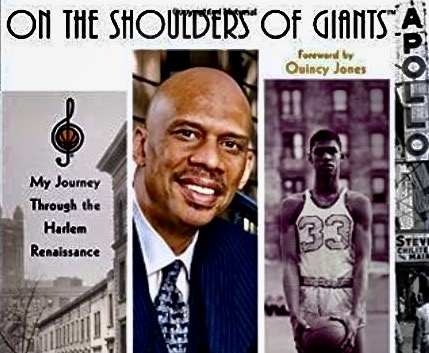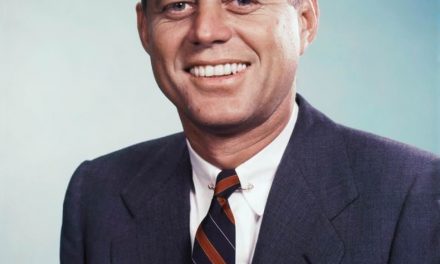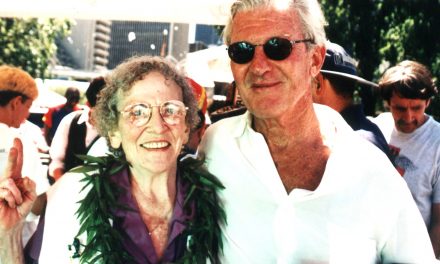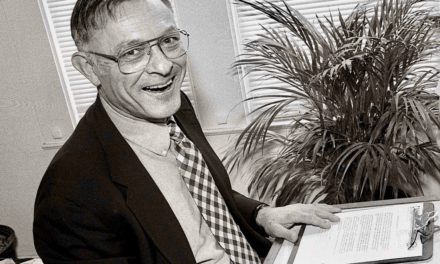By Fred Gardner
On a rainy Friday night in February, 2007, at Diesel, a bookstore in the Rockridge section of Oakland, Kareem Abdul-Jabbar signed copies of “On the Shoulders of Giants,” his book about the Harlem Renaissance of the 1920s and ’30s and its impact on him, personally (Simon & Schuster, $26).
Purchasers had been given yellow cards with numbers specifying their place in line. By the time the author arrived, card #180 had been issued and the line snaked through the aisles like a stationary conga dance. Number 33 was a young African-American woman who had become engrossed in the book while waiting. She told your correspondent that 33 had been Kareem’s number and she was hoping he would sign her yellow card. I had brought a book of my own to give him (“Ethno-Botany of the Black Americans” by William Ed Grimé), and some copies of O’Shaughnessy’s, the pro-cannabis doctors’ journal, in an envelope. Abdul-Jabbar is a migraine sufferer who has acknowledged having a doctor’s approval to medicate with cannabis but has been arrested twice for possession.
Abdul-Jabbar was seated behind a table, pen in hand. He glanced at Grimé’s book with interest, said thanks, and passed it to a woman standing alongside the table. I gave her the envelope, too. She said, ominously, “We’ll review the packages.” She was Kareem’s manager and her card said, “Iconomy (Merging Icons with Economics).” I wonder if she’ll deem Grimé and O’Shaughnessy’s worthy of being passed on to her client; or too risky, image-wise. Abdul-Jabbar, who is on the staff of the Los Angeles Lakers, reportedly aspires to be a head coach in the National Basketball Association.
In “On the Shoulders of Giants” Abdul-Jabbar (with co-author Raymond Obstfeld) recounts how a few square miles in northern Manhattan became the cultural capital of Black America in the 1920s and ’30s (while extortionate rents were creating slum conditions). Abdul-Jabbar’s definition of the Harlem Renaissance is expansive enough to include not just its famous intellectuals —Langston Hughes, Zora Neale Hurston, W.E.B. Du Bois, James Weldon Johnson, et al— but Marcus Garvey, the charismatic advocate of a return to Africa who had a mass following. “It was the renaissance atmosphere in Harlem that gave him the inspiration and platform to launch his Universal Negro Improvement Association,” Abdul-Jabbar explains.
The classy intellectuals promoting the image of a “new Negro” despised Garvey. “In an article in [the NAACP journal] ‘the Crisis’ entitled ‘Lunatic or Traitor,’ Du Bois called Garvey ‘the most dangerous threat to the Negro race.’” Garvey called the NAACP “the National Association for the Advancement of Certain People.” Abdul-Jabbar does not play favorites in describing this old but still relevant class split. “On the Shoulders of Giants” treats all its protagonists with understanding, respect and insight.
Music and basketball flourished in the Harlem renaissance. Abdul-Jabbar grew up steeped in the former -his father was a Juilliard-trained musician who made a living as a transit cop and played in jam sessions with the likes of Dizzy Gillespie and Max Roach. Whereas the famous Cotton Club (owned by gangster Owney Madden) admitted only white patrons, the black-owned Renaissance Casino and Ballroom on West 138th St. served the real Harlem. The Crisis held its awards dinners there, the Brotherhood of Sleeping Car Porters and other unions held meetings there, “patrons danced to the jazz licks of the house band fronted by Vernon Andrade, as well as other renowned musicians and entertainers And the Renaissance Casino and Ballroom had one other thing the Cotton Club didn’t have: an all-black championship basketball team, the Rens. Between band sets, the dance floor would be cleared and the Rens would play basketball to the enthusiastic cheers of the patrons. When the game was over, the hoops would be stored away and the dancing would continue, sometimes with team members joining customers on the dance floor.”
When Abdul-Jabbar first learned about the Rens as a high school student, a passionate interest was aroused. He has researched their history and in this book lays it out in the detail it warrants. In 1939 the Rens defeated the Oshkosh All-Stars in the World Professional Basketball Tournament, a 12-team event that included two black teams (the Rens and the Harlem Globetrotters). Abdul-Jabbar observes that white teams had “more formal and scientific” coaching but were constrained from improvising. “Like some of the jazz musicians who had been denied formal training or forbidden to perform with whites,” black basketball players “developed a style all their own.” Julius Erving is quoted: “Soon the white player began to emulate these thoughts and moves and eventually the game became what it is today —a stage where a unique combination of the team concept and individual expression is presented in pure form.”
Outside the bookstore I asked lovely young #33 if she’d gotten Kareem’s autograph on her yellow card. She said she couldn’t bring herself to ask him. “I got too shy”





